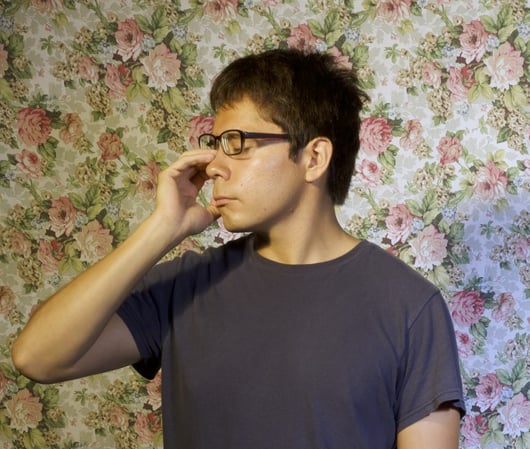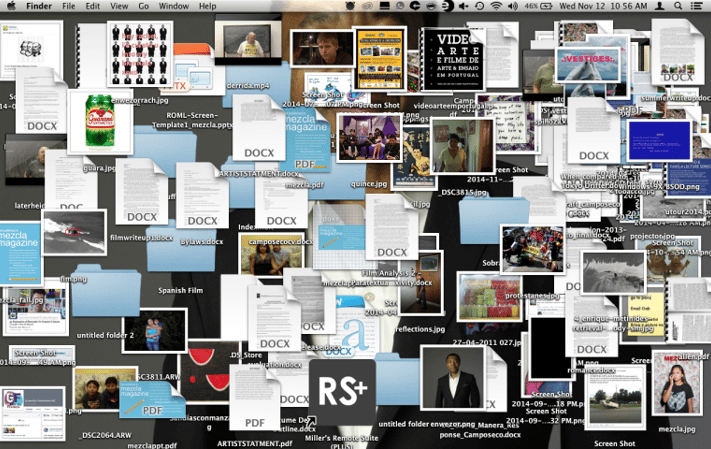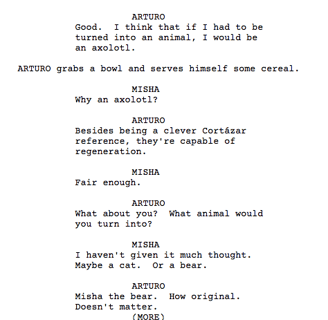Interview with: Diego Camposeco
Graphite Admin
12/4/20185 min read


Several months ago, Graphite Journal quietly released artist Diego Camposeco’s newest work titled “Diego Saves the World.” Now, Graphite Co-Head Michelle Kim interviews Camposeco about his undergraduate experience, growing up in North Carolina, and screenplay writing.
Michelle Kim: How would you explain your artmaking practice to a stranger?
Diego Camposeco: I’m primarily a photographer and video artist, but I also dabble in screenwriting. Much of my work deals with the Latinx community in North Carolina, but I like to mix it up from time to time and broach topics such as unrequited love, the budding scientist, and even night clubs.
MK: Describe your experience as a Latinx person living in North Carolina.
DC: North Carolina is a battleground state politically, and the majority of the Latinx population has been here less than thirty years, so it’s completely different from being Latinx in many other parts of the country. Knowledge of Spanish is becoming increasingly important to interact with immigrant communities. Also, towns and cities where there is a significant Latinx population have seen changes politically as well. For instance, anti-immigration sheriffs have been voted out in many of these locations.
MK: What compels you to make your work? For example, many of our Graphite readers were curious about “Diego Saves the World.” Could you discuss your thought process as you made this work?
DC: “Diego Saves the World” is the title of a “Go! Diego! Go!” DVD collection of episodes, which is where the name for my video comes from. I started making it my senior year of college. It’s really a series of inside jokes about my undergraduate career and how it was coming to a close. I wanted to create a piece that was simultaneously silly and serious which compiled all of my interests throughout undergrad: animal and climate ethics, photography, critical theory, and self-reference. The end product is like if Jorge Luis Borges made a YouTube Poop, glitches and all.
MK: What was your undergraduate experience like? What was your experience as a person of color navigating a white dominated space?
DC: I went to UNC-Chapel Hill in North Carolina and decided to major in art from the get-go. I was on a merit scholarship so that definitely colored my experience in a good way.
UNC’s art department is a hidden gem. During my time there, many of the professors were amazing artists who really knew how to synthesize form and content. I’m still in touch with many of them and am in awe when it comes to how their careers are going. I was, however, one of the few people of color majoring in art, so that did make me feel a little lonely at times. It would have been nice to talk shop with another fellow student of color sometimes.
While all art departments have their strengths and weaknesses, I valued UNC’s conceptual-minded curriculum. I would also bet money that UNC’s art library is one of the best photo/art book university collections on the east coast.


MK: What have you been reading? What do you think everyone should read?
DC: I’ve actually been reading a lot of science and math books lately. “Perfect Rigor” by Masha Gessen, a biography on the reclusive mathematician who solved the Poincaré Conjecture Grigori Perelman, is a highlight. “Beyond Measure” by Jim Baggott, a book on the mystery of how to interpret quantum mechanics was really good too. A book I think everyone should read is “A History of Western Philosophy” by Bertrand Russell. He has a witty way of introducing many of the major philosophers throughout history.
I’m also a fan of the Introducing Books series: graphic guides to big ideas. They’re little graphic novels for concepts ranging from postmodernism to general relativity, which remind me of the book “Logicomix: An epic search for truth.” That’s another great graphic novel, this time about Bertrand Russell himself and his encounters with Ludwig Wittgenstein, Alan Turing, Kurt Gödel, et al.
MK: Do you find yourself gravitating towards a specific scientific field? Would you be interested in doing your own research work within the field?
DC: I have entertained the idea of being a mathematician before. There’s this math problem called the P vs NP problem which if solved in the affirmative would herald a utopia. It’s basically the algorithm to creativity. Unfortunately, many computer scientists don’t believe P=NP.
I also have an interest in quasicrystals. In their form, they hold the key to prime numbers which would help out with understanding quantum mechanics as some scientists think they’re related. The question is how do we extract the answer to the Riemann Hypothesis from them? But beyond that, I’m interested in how quasicrystals react to plants and plant products such as simmering wine and seeds.
MK: With the emerging popularity of artificial intelligence and VR, there is more room for open minded discussion surrounding potential intersections between art and science. Could you possibly see yourself making work within these intersections?
DC: When you think about it, we could all be individualized algorithms operating in a virtual reality simulation already so AI and VR don’t interest me as much. I’m more interested in art that elevates the absurd and irrational in life. That could be through the imperfect pottery that children are forced to make in grade school to grand conceptual pieces that explore libidinal desires.
MK: How does your art inform your screenplays? Do you believe the two mediums are interchangeable?
DC: I think each medium has a different way of saying things. I love photography’s immediacy. It punches you right in the gut when done right. I also love video art’s experimental nature. There are so many variables in it from sound, to visuals, to presentation. However, the screenplay is a completely different beast. Traditionally, screenplays are more about character development, story, and dialogue rather than visuals. It works a different part of my brain and allows me to expand upon various ideas I have. I will say that most of my screenplays revolve around an artist of some sort, so that’s a way art informs my screenplays.


MK: Would you mind sharing what you are currently writing?
DC: I’m currently working on a new draft of a screenplay about an undergraduate physics major and his interactions with a film student making his senior thesis project. In the new draft, the film student, who is secretly in love with the physics major, stumbles upon a furtive postdoc who has figured out how to clone organs successfully and so the film student decides that his next documentary film will be about cloning the physics’ student’s heart.
MK: Do you have any plans on shooting your screenplays?
DC: If nobody picks up my screenplays, I will definitely shoot them myself. I write them in a way that they’re feasible enough to be done on a relatively low budget. I’m actually waffling between going back to school for an MFA in filmmaking vs screenwriting where I would either shoot my screenplays or write new ones.
